You are here
Church of Intercession in Katon-Karagay.
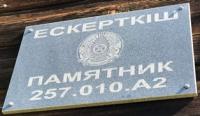
Architectural sights of Kazakhstan.
“When the time comes, whether we like it or not, the soul, full of sins, will go its own way.”
Maarri al-Maarri.
Ancient monuments in Kazakhstan.
The remains of the Church of the Intercession are located at an altitude of 1044 meters above sea level, located 70 meters from the right bank of the small Sarymsakty River, 160 meters north and slightly east of the monument to Karatai Batyr in the southern part of the regional administrative center of the village of Katon-Karagay of the same name in the eastern part East Kazakhstan region.
In the XIXth century, the village consisted of 2 parts - the Cossack village of Altai (founded in 1871) and the volost village of Katon-Karagaisky (founded in 1868), which was located two miles east of Altai.
The wooden Church of the Intercession in the village was built in 1882 with money from the Cossack Military Economic Administration and Cossack parishioners from both villages. The church operated until the 30s of the XXth century, when, after closure and refurbishment, a club was opened in it, and subsequently a rural school named after Rykov.
Currently, despite the presence of a sign on the building “Monument 257.110.A2”, it continues to collapse and is taken away by locals for firewood. And there is almost no chance of restoring the church in a village where more than 80% of the population professes Islam.
Geographic coordinates of remains of wooden Church of Intercession of Blessed Virgin Mary in the village of Katon-Karagai: N49°10'07.35" E85°36'16.80"
Note:
If you are using geographic coordinates for Google Earth or Google Maps navigation systems, you must remove the last two digits from geographic coordinates and " (hundredths of a second) and enter the result in the input line. Example: N51°44'09.67" E72°39'40.81" = N51°44'09 E72°39'40
Church of Intercession of Altai village (Katon-Karagai).
Until quite recently, one of the most remarkable monuments of Orthodox church architecture on the territory of Eastern Kazakhstan was the wooden Church of the Intercession of the Blessed Virgin Mary in the village of Katon-Karagai.
Currently, Katon-Karagay consists of two, formerly independent parts: the Cossack village of Altai and the village of Katon-Karagai. This is how the famous explorer of the region, priest Boris Georgievich Gerasimov, characterizes them in his article “A trip to the Rakhmanovsky mineral springs.”
“...The village of Altai lies in the valley of the left tributary of the Bukhtarma Sarym-Sakta and is all surrounded by green gardens. Irrigations flow gurgling along the streets. A beautiful, dense alley, mostly of birch trees, gives the settlement a picturesque appearance.
In the village of Altai the postal route from Ust-Kamenogorsk ends and is replaced further by the zemstvo route. The area on which the Altai village is located previously belonged to China, but, after the delimitation of the border, it came into the actual possession of the Russian government.
The foundation of the village was laid in 1871. In Altai there are: a church, a beautiful school building, a post office (Katon-Karagai), here is also the seat of the Altai forester, medical personnel and veterinary supervision.
The fair, which runs from December 6 to 19, is rumored to have a turnover of up to 250,000 rubles”...
“...Katon-Karagaysky village is located two miles from the village of Altai. The village has a bazaar, customs, a school, a magistrate’s cell, and a hut on chicken legs with a sign “Altai Arrest House.” The peasant chief of the Ust-Kamenogorsk district also lives here...” Currently, these two settlements form a single whole.
However, unlike the beginning of the 20th century, the beginning of the 21st can be characterized as a period of significant decline of Katon-Karagay. In place of a large number of houses there are now only hillocks overgrown with grass; many buildings stand in ruins and make a painful impression.
There is also an Orthodox church in ruins, the view of which opens immediately upon entering the village. Above the roofs of low one-story buildings rises the heavy, dark bulk of a wooden church, seeming especially bulky and mundane, due to the absence of its verticals, which once pierced the sky.
One constantly feels the enormous tension of the struggle against gravity, the painful desire to pierce the atmosphere - a phenomenon characteristic of beheaded Russian churches. The impression of the formidable power of the temple is greatly enhanced by the blackened eye sockets of the empty window openings, as well as by the ribs of the rafters of the tent of the main volume, which only partially preserved the iron covering.
The Intercession Church was built at the expense of the Cossack Military Economic Administration, as well as Cossack parishioners of the Altai village and Katon-Karagai village in 1882. The newly built church became part of the Deanery of churches of the Bukhtarma region, where the post of dean was held by the priest of the St. Nicholas Church of the Zyryanovsky mine, Alexander Troitsky (in 1918 he was transferred as a cleric to the Intercession Cathedral in Ust-Kamenogorsk).
The clergy of the church at the beginning of the XXth century consisted of a priest-rector and a psalm-reader: Priest Leonty Protopopov and Pamphilus Koshalovsky. Despite the fact that the Church of the Intercession was built of wood, in its appearance, as well as in its plan, the architectural techniques inherent in the brick buildings of the Irtysh region of the late XIXth - early XXth centuries were clearly visible.
Parts of the building of different sizes: the vestibule, refectory, large hall and altar were decorated with patterns of window openings, as well as decorative designs on the western, southern and northern gates.
The main volume of the building (quadrangle) ended in an octagon, and above the vestibule (western side) rose a tall, slender bell tower with a hipped roof. The article presents the author's reconstruction of the original appearance of the church, made on the basis of field research of the remains of the building, as well as a study of the design of the Intercession Church, now stored in the funds of the regional architectural and ethnographic museum-reserve (VKMZ, Ust-Kamenogorsk).
This is perhaps the only drawing of a rural church in the Irtysh region discovered to date. The collections of the ethnographic museum also contain some religious objects (the altar Gospel, wedding crowns, books, icons), testifying to the former wealth of the now lost decoration of the Intercession Church.
In the first two decades of the Soviet period, services continued to be held more or less regularly in the temple. In 1923, a large number of Orthodox parishes passed to the Renovationists (“Zhivotserkovniki”, “Red Priests”).
According to some reports, the Church of the Intercession also became Renovationist, but, unfortunately, the history of the temple of the 20s - 30s of the 20th century remains little disclosed. Local old-timers have preserved insignificant fragmentary information about some clergy.
In particular, the priest Rudnev, buried near the church, is mentioned. After Rudnev, they point to Boyarkin, although his position at the temple remains unclear - priest or elder. Residents of the village well remembered priest Vishnevsky, who had daughters Augusta, Ekaterina and Maria.
A family photograph of the Vishnevskys has been preserved, but the name of the head of the family remains unclear. In the second half of the 30s of the 20th century, a nun from one of the closed monasteries of Eusebius (in the world Evgenia Korolev) lived in Katon-Karagay, who subsequently left for a monastery in Bendery (Moldova).
In 1937, the rector of the Church of the Intercession, Pyotr Kiryanov, was exiled to the village of Yazovaya. Apparently, at the same time the temple was closed. Peter Kiryanov subsequently returned to Katon-Karagay, but lived unnoticed with his daughter, from time to time secretly performing various services (weddings, christenings, etc.) at the request of those in need.
Most of the Orthodox rural parishes in the region were closed in 1929, when 70 churches were forcibly taken away from believers. The Katon-Karagai Church was not included in this sad list. It was one of the last to be closed, along with the city churches that remained active at that time.
After closing, the Church of the Intercession was turned into a club, and then into a school, later named after Rykov. The appearance of the church changed significantly: the hipped bell tower and domes were demolished, the altar apse was dismantled, and the interior of the building, divided into two floors, was redeveloped.
An L-shaped structure was added to the temple on the eastern side, and new window openings were cut out on the southern side of the main volume. Already in our time, after the school was moved to another building, the former church was looted, as a result of which only the walls and fragments of the roof were actually preserved.
In 2008, the barbaric destruction of the Intercession Church was resumed: the vestibule and refectory were destroyed - until recently, the only ones of this kind that remained in the region. In essence, all that was left of the former church was a cube of the main volume with an octagon above it, almost completely devoid of an iron roof.
The destruction of this unique historical and architectural monument occurs despite the fact that it is on the list of state-protected cultural heritage sites of Kazakhstan.
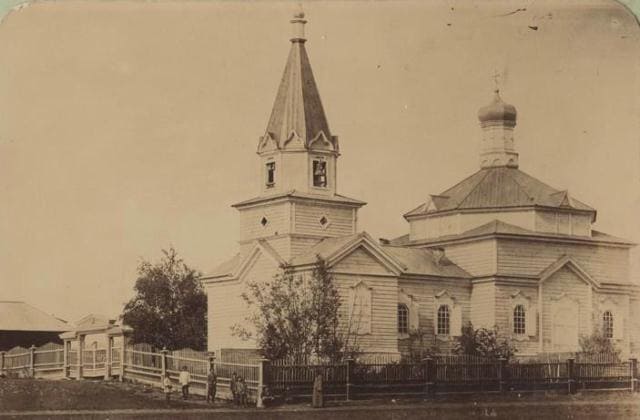
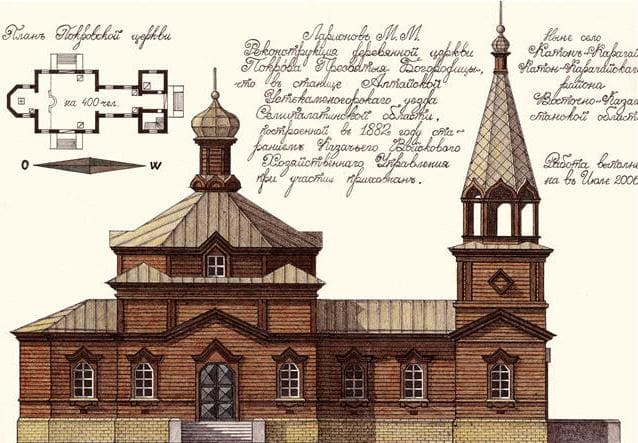
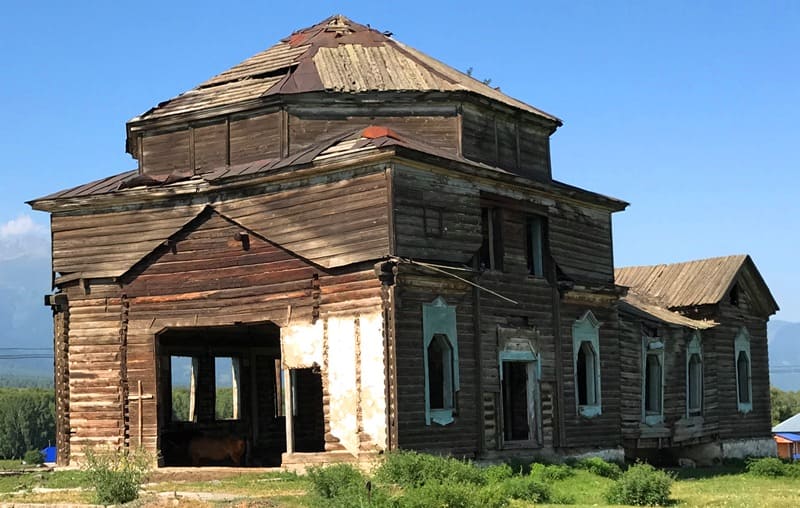
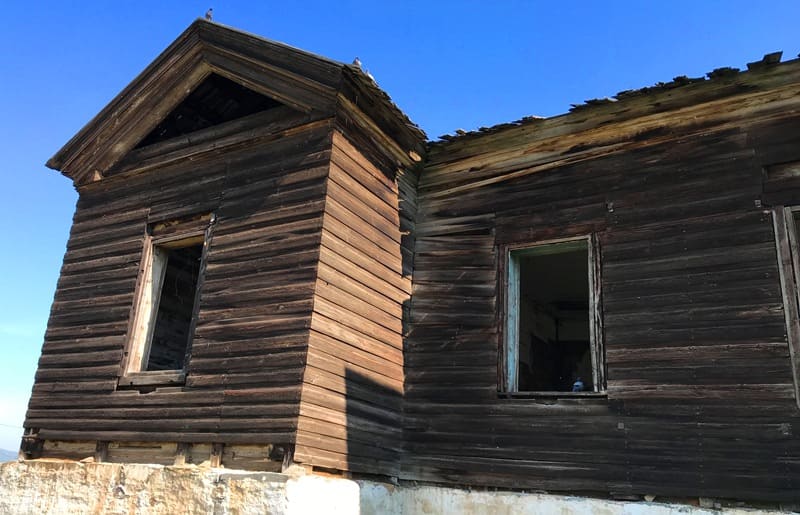
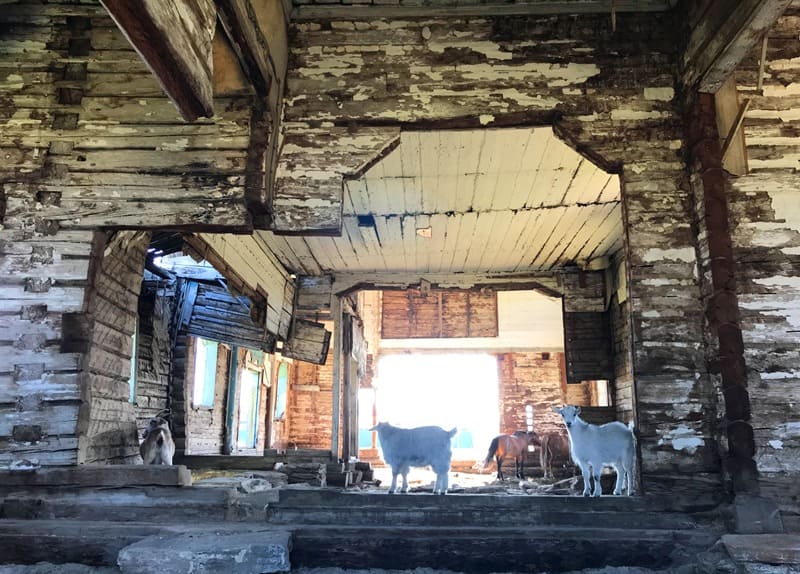
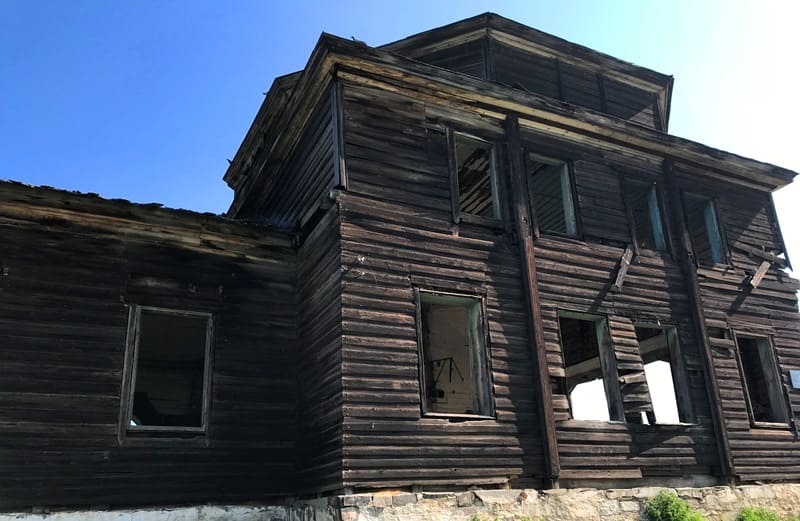
Literature:
B.G. Gerasimov. Selected works: facsimile edition. Ust-Kamenogorsk: Shygys-Baspa, 2000 – 335 p. “A trip to the Rakhmanovsky mineral springs.” Page 43.
2 B.G. Gerasimov. Selected works: facsimile edition. Ust-Kamenogorsk: Shygys-Baspa, 2000 – 335 p. “A trip to the Rakhmanovsky mineral springs.” Page 44.
3 B.G. Gerasimov. Selected works: facsimile edition. Ust-Kamenogorsk: Shygys-Baspa, 2000 – 335 p. "Ancient churches of the Semipalatinsk region." Page 180.
4. Address-Calendar of the Semipalatinsk region, Semipalatinsk, 1914, p. 74.
Right here. Information about the movement of priest Alexander Troitsky was received from Abbot Amfilochiya (Bondarenko), dean of the Ust-Kamenogorsk district of the Astana-Almaty diocese (now dean of the 1st Pavlodar district).
5. Address-Calendar of the Semipalatinsk region, Semipalatinsk, 1914, p. 74.
6. Information about the clergy of the Intercession Church of the Altai village of the Soviet period was received from old-timers: Elizaveta Afanasyevna Koroleva (born 1929 - relative of the nun Eusevia), Ivan Afanasyevich Shershnev (born 1924), Tatyana Alexandrovna Matveeva - daughter of the last ataman of the Cossack village .
7. Center for Documentation of Contemporary History (CDNI VKO) Semipalatinsk. F.74, Op.1, D.208, L.2,3a,3,4,5.
Authority and black and white photos:
Bulletin of Kainar University. No. 1/1(76), Almaty, 2010. – P. 28 – 31.
https://vkoem.kz/index.php/ru/2010-03-09-08-54-46/85-2010-03-09-10-07-22/1094-larionov-mm-pokrovskaya-czerkov-staniczy-altajskoj-katon-karagaj-tragicheskie-straniczy-istorii
Color photos by:
Alexander Petrov.






